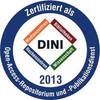PDF, English
 Restricted access: Repository staff only until 6 August 2026. Restricted access: Repository staff only until 6 August 2026.
Login+Download (21MB) | Terms of use |
Abstract
Cytotoxic immune cells, such as Natural Killer (NK) cells, are key players involved in the detection and elimination of malignant cells. Consequently, they hold significant promise for use in cell-based cancer immunotherapies. While translation into clinical practice is ongoing, much remains to be understood about how and under which conditions NK cells can effectively kill target cancer cells. In contact with target cells, a heterogeneous cytotoxic response can be observed where the majority of NK cells can remain unresponsive, while others will deliver a cytotoxic hit. Remarkably, a small fraction of NK cells will kill several target cells in a row – an ability termed serial killing. In this thesis, I developed a modular droplet microfluidic pipeline to successfully resolve this phenomenon on a single-cell level. Towards this end, single primary human NK cells are co-encapsulated with several target cells into picoliter-sized droplets allowing the observation and quantification of cytotoxicity and serial killing behavior. Moreover, I developed an advanced high-throughput dielectrophoretic droplet sorter to isolate serial killing NK cells, thereby providing a missing link between the droplet microfluidic assay and other non-microfluidic techniques. I solved key engineering problems related to the reliability, accuracy and throughput of the droplet sorting resulting in a platform called MultiCell-Sort: a generalized tool that allows advanced screening experiments based on cell-cell interactions beyond the application in serial killing. Leveraging the capabilities of MultiCell-Sort platform, the ultimate goal of my doctoral work was to shed light on the reasons for the heterogeneous cytotoxic response of NK cells. First, I identified an array of surface markers via flow cytometry to provide a high-level signature of the serial killing subset. IV To investigate what molecular fingerprints and regulators are associated with the serial killing phenotype, I performed single cell RNA sequencing, analyzing transcriptomic profiles of serial killing versus non-cytotoxic NK cells. I could show that serial killing NK cells undergo metabolic reprogramming during target cell exposure, engaging in the Warburg effect. Multiple indicators point to the transcription factor Myc as the central effector of this switch. Furthermore, trajectory analysis of the transcriptome dataset revealed a rather small population among naïve, unstimulated NK cells that exhibit a developmental trajectory towards the serial killing phenotype and therefore match the description of a serial killing precursor population. Given their gene expression profile, I hypothesize that these potential precursors might be primed by Myc and upstream regulators to respond rapidly to IL2 stimulation and gain the serial killing capacity. In the future, a preselection of serial killing precursor cells and validation of their superior anti-tumor efficacy could yield in an improved population that could be further expanded. Second, developing strategies to induce a Myc-driven switch across bulk populations of NK cells could broadly boost their cytotoxicity. Taken together, these insights open up avenues to enhance NK cell cytotoxicity that could be translated to advance NK cell-based cancer immunotherapies.
| Document type: | Dissertation |
|---|---|
| Supervisor: | Spatz, Prof. Dr. Joachim |
| Place of Publication: | Heidelberg |
| Date of thesis defense: | 24 July 2025 |
| Date Deposited: | 11 Aug 2025 09:56 |
| Date: | 2026 |
| Faculties / Institutes: | Fakultät für Ingenieurwissenschaften > Dekanat der Fakultät für Ingenieurwissenschaften Fakultät für Ingenieurwissenschaften > Institute for Molecular Systems Engineering and Advanced Materials |









